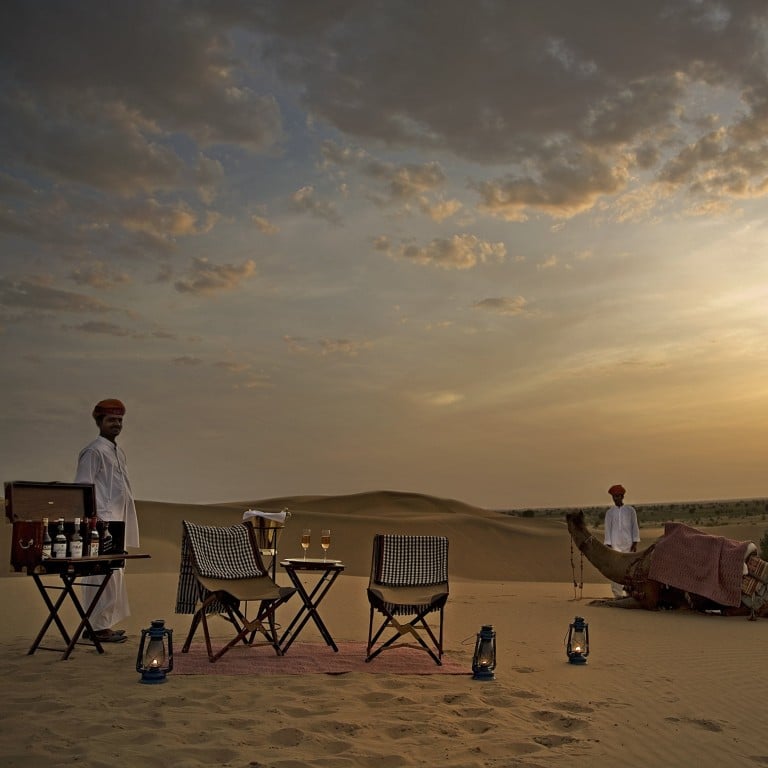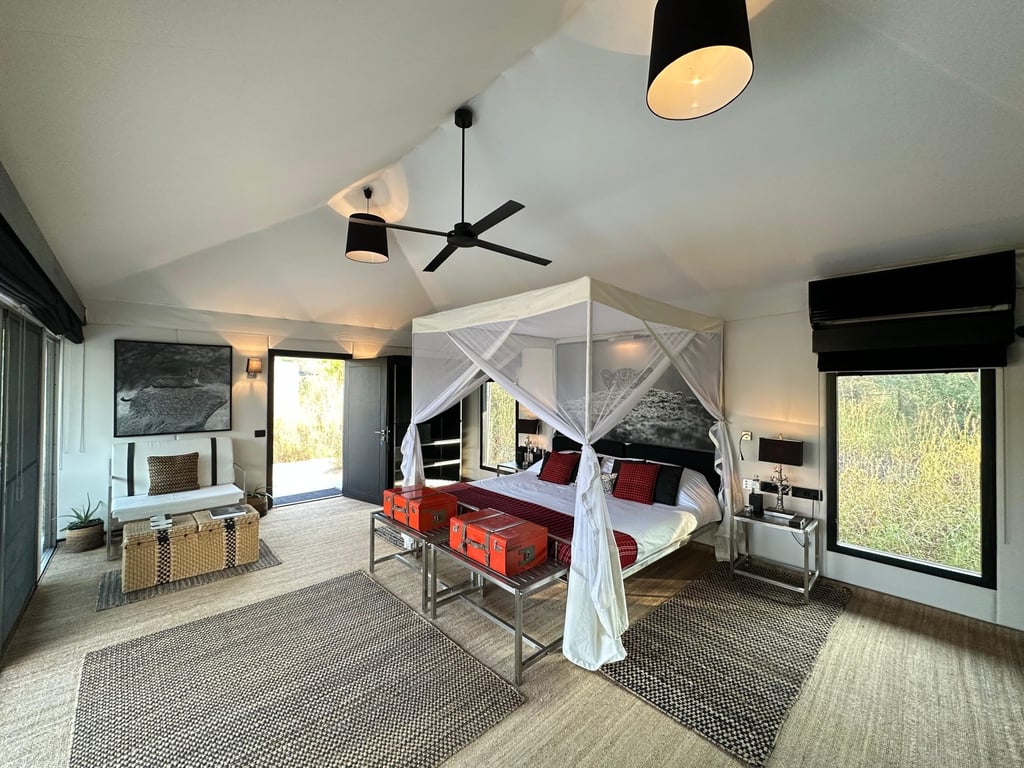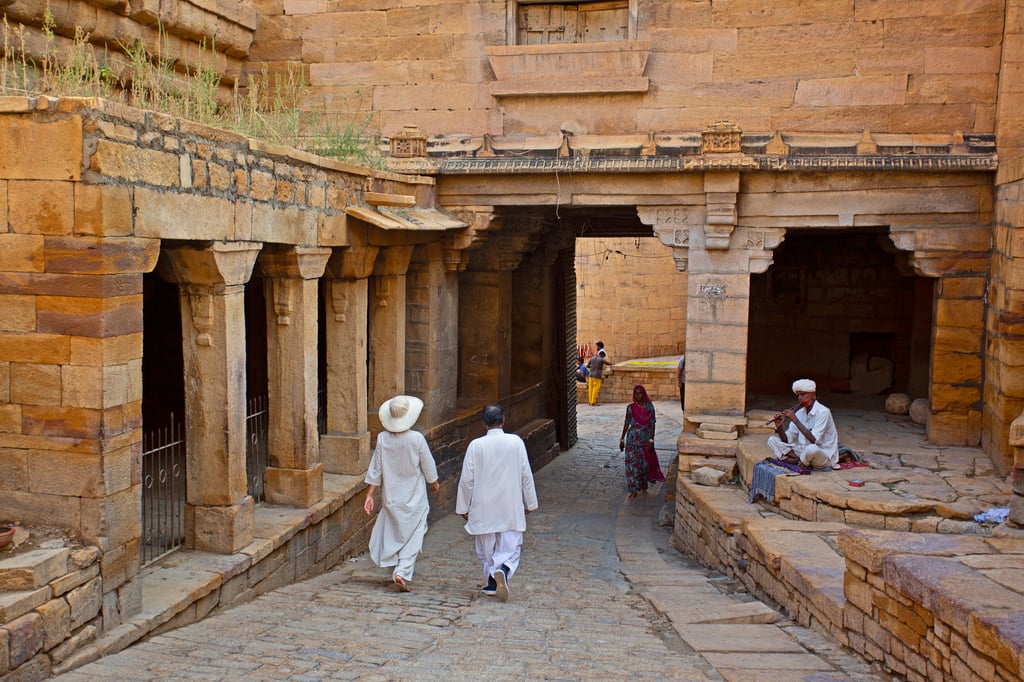Explore Rajasthan in luxury: the tribes and vibes of India’s desert oasis – stay at Suján Jawai, Suján Serai and Mihir Garh resorts to explore the golden city of Jaisalmer and the windswept sands of Jawai

- Conservationists Jaisal and Anjali Singh, founders of the Suján hospitality group, rewilded an area of the Jawai, introducing mongoose species, Asiatic wildcats, Indian pythons and rare birds
- Suján Serai is an hour from the fort city of Jaisalmer, a Unesco World Heritage site, while the resort of Mihir Garh is a modern recreation of a desert fort outside Jodhpur
It’s just before dawn and our jeep is hurtling through the 850-million-year-old granite rock formations of Jawai in Rajasthan, northwestern India. We come to an abrupt stop, and I am instantly face-to-face with Baliraja, an alpha male leopard who lays claim to these ancient hills as his territory (and has the battle scars to prove it). He looks straight through me with his piercing eyes – green at the centre, yellow round the edge – then drags a goat carcass out in front us, giving us a prime view as he devours his hard-earned breakfast.

It turns out this scene is common at Suján Jawai, a remote yet luxurious wilderness camp that couldn’t be further from the glorious and historic forts and palaces that have come to define Rajasthan as a bucket-list destination. Over the next few days, we watch these magnificent creatures go about their daily routines completely unbothered by the humans around them. In the mornings we watch them hunt before they retire to nearby caves for a nap, while late afternoons they are found basking in the rosy late sunlight. On one occasion, we watch in awe as two sisters fight it out amid the landscape’s boulder-strewn, bone-dry landscape.
Unlike Ranthambore National Park in the east, Rajasthan’s most popular tourist attraction and a tiger reserve, Jawai isn’t a protected area, yet these elusive cats have made it their home for generations. Coexisting with the surrounding indigenous communities of the seminomadic Rabari people, there are no records of any villager being attacked or killed, nor of attacks on the cats either.

With the leopards the obvious star attraction at Suján Jawai, guests are encouraged to explore the unusual harmony that exists between man and apex predator here, through the cats’ daily interactions with the region’s Rabari tribe. These indigenous people cut a striking figure in their simple white dhotis, scarlet turbans and traditional shoes soled with old tyres as they stride about the sparsely vegetated land.
Unlike the leopards, their numbers are dwindling as the younger generation head to the city, seduced by the promise of a much different future, leaving elder members to tend to the sheep and goats that have been their livelihood for centuries.
Over a decade ago, conservationists Jaisal and Anjali Singh, founders of the Suján hospitality group, decided to rewild 100 square kilometres of this traditionally agrarian area, planting indigenous plants and grasses, then reintroducing a variety of species including a species of mongoose, Asiatic wildcats, Indian pythons and rare birds. In time some of these species may become prey for the leopards, but for now the cats are content with taking stray dogs as well as goats from the Rabari flocks. The government compensates the tribespeople every time a leopard claims one of their goats and Suján Jawai also has a fund to compensate them so the villagers tolerate their losses, ensuring this remarkable cohabitation continues.

Returning to camp after a day out with the elders trekking to one of the many temples amid the worn, granite hills; or visiting the area’s eponymous dam built by a maharaja in the 1950s and home to the Indian mugger crocodile, you can unwind with a fragrant chai masala by the resort’s campfire before you retreat to your newly renovated quarters, which include nine luxury tented “rock” suites. The sleek black and white interiors are punctuated by pops of red – a nod to the Rabari’s headwear – and decorated with striking photographs taken by the owners of the leopards.
As you head west from here, closer to the Pakistan border, the landscape changes, getting even more parched as you reach the great Thar Desert, a near-mythical area steeped in 5,000 years of history and once home to the famed Indus Valley civilisation. The extreme climate, however – in summer temperatures soar as high as 50 degrees – means that you’ll want to be sure to visit during the winter months.

Towering above the ochre-coloured landscape and sand dunes is the imposing Unesco World Heritage site and “golden city” of Jaisalmer. It’s best known for its sprawling complex of yellow sandstone walls that were started in 1156 and happens to be the only “living” fort in India, with around 3,000 people still calling it home.